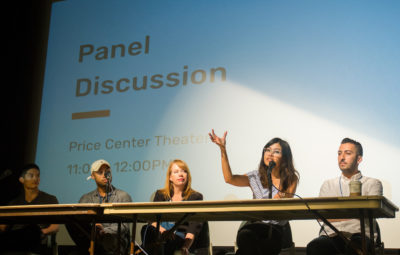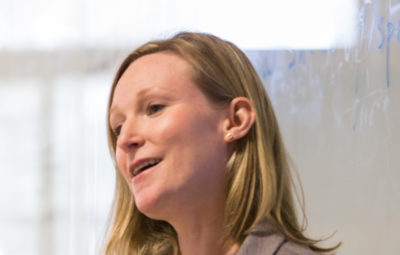Actively engaging the public in urban design planning is essential to both establishing a strong sense of community and nurturing ownership of that community’s prosperity. Unfortunately, participation in such a process is often challenging for the general public due to time, knowledge, and access constraints. Pioneered by Dr. Narges Mahyar and Dr. Steven Dow in the UC San Diego Design Lab, a new platform named CommunityCrit (cc.ucsd.edu) complements those traditional methods and allows community members to have an active voice in urban projects — online. A research paper describing the results will be presented by Dr. Mahyar this month at the Conference on Human Factors in Computing Systems.
“CommunityCrit enables community members to look at the ideas that have been proposed, improve and evaluate them, and propose new ideas. CommunityCrit extends the status quo by offering activities that engage community members in elaborating and evaluating urban design ideas, empowering them to contribute in a short amount of time, and supporting diverse levels of skills and availability ” explains Mahyar.

On the website, users can propose new ideas or improve existing ones through a series of questions, called “micro-activities.” Users can submit or evaluate as few or as many ideas as they want, giving them a large amount of flexibility in engagement with the site.
“To design and evaluate CommunityCrit, we partnered with a local planning group working to redesign a major intersection at 14th Street and Commercial Ave in San Diego, CA. The planning group envisioned a pedestrian destination and a place of social gathering with the overarching goal of creating a more sustainable, walkable area while connecting neighborhoods surrounding the intersection” says Mahyar.
Mahyar and the research team attended public workshops hosted by the local planning team, transcribing the ideas that came out of them and feeding them back into CommunityCrit so others could then improve, evaluate and comment.
“I was really pleased by the quality of people’s contributions,” says Mahyar. “We received over 300 ideas and comments in four weeks, which is impressive; most community ideas and comments were good enough to be accepted and presented for everyone else [on the website].”

One issue with public forums is that those with busy schedules or other conflicts may not be able to attend. CommunityCrit aims to remedy this by giving those individuals an opportunity to share their input.
“An important aspect of the system is that we allow people to engage in these ways with a short amount of time, because that’s a barrier to most people getting involved. It has to be compacted down in a way that gets them in,” says Dow. “But they can also keep going and do a lot of small things that add up.”
“What was really interesting for me was seeing interest from the organizers, as well as from a lot of people from the community who we interviewed. For example, one of our interviewees is a manager of a creative firm and she said, “‘I’m a working mom. So this tool really empowered me to have a say because I don’t have time to go to those meetings,’” adds Mahyar. “So to me, that was like, this is really what we wanted! Our goal is to empower people to take part in civic issues and especially the ones who want to be engaged, but they don’t have the time to go to those meetings.”
However, despite CommunityCrit’s success, one common problem is making sure all members of the project, not just community members, are on board.
“When we went and talkedat the last planning meeting, the people who planned that event were discussing , ‘Yes, it was successful at getting input, but is that really what we want?’ They were actually questioning the value of a more democratic process,” says Dow. “So I think that speaks to the challenge of not just getting people to provide input, but making sure that it’s valuable to the process, and that the people who are leading the process see value in getting that input.”
CommunityCrit was successful in engaging people to elaborate on and evaluate ideas, rather than merely voicing issues or submitting ideas. A key goal for CommunityCrit going forward is to follow an urban project from start to end, and to understand how our approach can be adapted to other contexts and broader scales.

“So there’s still a lot for us to think about how to come up with new tasks, new activities for people, how to change the interface to support different phases of the activities. Another way to improve the tool is to create an interface soany organizer can customize the tool for their own purposes.”
Ultimately, CommunityCrit hopes to empower civilians to impact civic-related decisions.
“People get really tired of ‘Here’s what I want, here’s my wish list, here’s how I want my city to be like in 20 years,’” says Mahyar. “One of our main considerations for CommunityCrit was to create a platform that engages people beyond providing opinions, ideas and issues. We wanted to avoid treating the public like data, and provide an opportunity to engage people in the more complex stages of urban design, such as elaborating, improving and evaluating proposed ideas.


